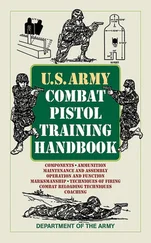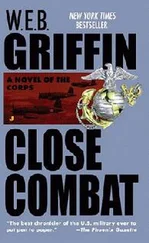The other factor that played into the equation was the desire to keep the number of casualties at the chemical plant low. When the OIC of the attack, an artillery captain by the name of Reitter, mentioned that during the rehearsal, Eric Bergeron could not help but laugh. Normally such outbursts were ignored. In the eyes of the professional officers assigned to the 401st the Cyberknights were not real soldiers and therefore unfamiliar with the proper military etiquette and protocol normally expected from soldiers belonging to “the real Army.” Reitter, however, was the sort that could not let such a breach of decorum go unchallenged. “As best I can see,” he snapped back, “there’s nothing funny about what we’re about to do, soldier.”
Eric didn’t shy away from the captain’s rebuke. “It’s not the fact that we’re going to be taking human life that I find laughable,” Bergeron explained. “What I find amusing is the concept that somehow, by killing only fifty people instead of one hundred and fifty, we’re being nice, or compassionate to the poor schmucks we’re zapping.”
Up to that point, Colonel Shrewsbery had been content to stand against the rear wall of the Pit, saying nothing as he listened while Reitter walked the assembled team through the operation. Eric’s comments and explanation, however, were both uncalled for and way out of line. “That’ll be enough of that, mister,” the infantry colonel bellowed. “We are soldiers, soldiers who have been given a mission. Executing that mission, and that alone, is all we are concerned with. Period.”
For several seconds, no one said a thing as Eric and the commander of the 401st locked eyes. Only when he was sure that he had made his point did Shrewsbery look over to where Reitter stood, seething in anger. “Carry on, Captain.”
When he was sure that their colonel was not looking, and while Reitter was fiddling with the note cards he had been briefing from, Bobby Sung leaned over till he was but a few inches from Eric’s ear. “Ve vere only following orders, herr judge,” Bobby whispered, using a mock German accent. Though they often joked about such things, the Cyberknights understood that they were playing the deadliest game there was. Only through the acceptance of the party line, as well as adopting the sort of graveyard humor soldiers have always used to preserve their sanity, did the Cyberknights manage to go on.
* * *
The one thing that would not be present in the Pit during the attack was something that no one in the 401st ever gave a second thought to, a gun. Once past the two MPs posted on either side of the Discrete Strike Operation Center’s red door, no one was armed. Yet the war that was about to be waged there was just as vicious, and deadly, as any war that had gone before. Only the tools, and the type of warrior who wielded them, had changed.
From his post in the Spook Booth, the commander of the 401st watched the bank of monitors as the members of his command prepared for combat. Just as the business community had been dragged kicking and screaming into the information age, so, too, had the Army. Professional soldiers such as Shrewsbery knew, in their hearts, that units like the 401st were necessary. While some saw this change as being inevitable, and others freely embraced it as a brave new world, all who had been raised on the heroic traditions of their fathers grieved in silence as Eric Bergeron and his fellow Cyberknights took their place in the front ranks of America’s military machine.
Joining Shrewsbery to monitor the attack were a number of advisors. One of the most important members of this second-tier staff was a lawyer from the Army’s Staff Judge Advocate Corps. Of all the people involved, her position in the scheme of things was the least enviable, since everything that was about to happen was illegal. Not only were there no federal laws that sanctioned what the 401st did on a day-to-day basis, the United States supported every effort in every international forum it could to counter cyberterrorism. While they understood the necessity to aggressively seek out and destroy those who sought to attack their country under the cover of cyberspace, it didn’t make anyone pledged to uphold the law feel good about what they were seeing.
If all went well, the JAG officer would have nothing to do. Her presence there was in case something went astray and the activities of the 401st or members of that unit had to be defended in a court of law. The JAG officers assigned to the 401st likened their plight to criminal defense attorneys retained by the mob.
Though he was also charged with enforcing the laws of the land, the FBI liaison in the Spook Booth viewed the undertaking with envy. As a member of that organization’s computer crimes unit, the FBI Special Agent followed everything that the hack attack team did. His presence there was more than a matter of courtesy. Despite the fact that the Bureau could not use the same aggressive techniques employed by the 401st, watching a hack from inception to completion served to improve his abilities to devise ways of catching domestic cybercriminals his agency would have to combat once his tour with the Army unit was over.
Also joining Shrewsbery in the Spook Booth were the CIA and NSA reps who had generated this mission as well as the Air Force colonel who was, himself, connected to the Air Force’s own cyberwarfare center in Idaho. Collectively theirs would prove to be the most difficult burden during the hack attack. While they had been the ones who had come up with the plan, none of them could do a thing once the attack had been initiated. Like the dummy monitors they watched, they would be powerless to influence the action.
This was not true of the final man in the room. As a member of the National Security Council, he had direct access to the national command authority. If all went well, he would have no need to use this access. Like the other people in the Spook Booth who were not assigned to the 401st the NSC rep would merely go back to Washington, D.C., once the hack was over and submit a written report to his superiors on what had happened. If, however, things got out of hand, the NSC rep would be the one who would pick up the phone and talk to the President and his advisors. While the NSC rep was friendly enough, Shrewsbery likened being confined in the small observation room with him to being locked in a cage with a tiger.
* * *
“Okay, people,” Reitter announced over his boom mike after his assembled team signaled they were ready, “Here we go. Comms, open the channel.”
The first step in any hack attack was to connect the Pit to an outside commercial network. This was done to keep dark knights from doing to the 401st what Reitter and his team were about to do to the cyberwarfare center macnife was operating from. The communications section of the 401st, located in another part of the Keep, literally had to plug the cable leading from the Pit into an external access port. These ports were arranged in a row on a panel painted bright red. Each of these connections was covered with a spring-loaded cap that snapped shut when the internal cable was removed. While there were written warnings posted all over the room, across the top of the red access port panel, and over each cover, a further audio warning was initiated as soon as a cap was lifted, announcing that the connection now exposed was a commercial line. When the connection was made a banner announcing that fact flashed across the top of the big screen in the Pit. This cued the pathfinder to initiate the attack.
Entry into the World Wide Web from the Pit was rather unspectacular. The procedure used by the pathfinder was not at all unlike that used by millions of his fellow Americans on a daily basis. The pathfinder dialed up the Internet server he desired and waited for the link to be made. Patiently he watched the display on his monitor. The plotted pathway that would take them from the Keep to macnife’s system was displayed using a rather simple wiring diagram. Each server along the chosen pathway was listed in the sequence that it would be tagged. Within the hollow wire box each server was identified using its commercial name, the access code the pathfinder would need to use to connect with it, the type of equipment the server used, the nation it was located in, and the language the local webmaster used when tending to it.
Читать дальше












